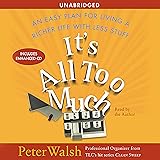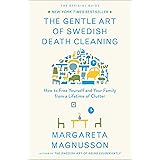In a world grappling with increasing water scarcity and environmental concerns, the concept of a truly sustainable home often feels like a distant dream. However, as the video above beautifully illustrates, achieving a remarkable level of self-sufficiency, including a **zero wastewater home**, is not only possible but also practical. Jaya’s home stands as a beacon of innovation, demonstrating how thoughtful design and readily available technologies can transform a conventional dwelling into an eco-paradise.
Many homeowners worry about their environmental footprint and rising utility bills. The good news is that solutions exist to significantly reduce both. Jaya’s inspiring example shows us how to tackle the challenge of water consumption and waste head-on. By understanding the principles behind her systems, anyone can begin to implement similar sustainable practices in their own living spaces, moving closer to a genuinely green lifestyle.
Embracing Water Independence: The Power of Rainwater Harvesting
One of the most impactful strategies Jaya employs in her home is comprehensive rainwater harvesting. Instead of relying solely on municipal water supplies, her property actively collects and stores precipitation. This system significantly reduces demand on external resources. It also creates a reliable, on-site water source for various household needs, contributing greatly to her goal of a **zero wastewater home**.
Jaya proudly shares that her underground sump has an impressive capacity of 30,000 litres. This substantial storage allows her to capture an astonishing 1.3 lakh litres of rainwater annually. This collected water isn’t just for outdoor use; it’s meticulously filtered and treated. It becomes safe for drinking, cooking, and washing, highlighting the purity and versatility of properly managed rainwater.
Harvesting rainwater offers numerous benefits beyond self-sufficiency. It helps recharge local groundwater tables, reduces stormwater runoff that can cause erosion and pollution, and lowers water bills. For anyone looking to reduce their environmental impact, installing a rainwater collection system is an excellent first step. Even a small barrel can make a difference, while larger tanks can transform your home’s water security.
Transforming Waste into Resource: Greywater Recycling Systems
Beyond capturing fresh rainwater, Jaya’s home takes water conservation to another level through an efficient greywater recycling system. Greywater refers to wastewater generated from non-toilet plumbing fixtures, such as sinks, showers, and washing machines. This water, unlike blackwater (toilet waste), typically contains fewer pathogens and can be safely reused for certain purposes after minimal treatment, making it a critical component of a **zero wastewater home**.
Jaya’s system daily recycles an impressive 800 litres of greywater, showcasing its effectiveness. Her method involves a multi-stage purification process. Initially, kitchen and bathroom wastewater flows into a structure called a baffle tank. This first level of treatment helps to separate larger solids and fats from the water, beginning the purification journey.
Following the baffle tank, the partially treated water moves into a reed bed. This innovative, natural filter consists of various aquatic plants. The roots of these plants play a crucial role, absorbing pollutants and breaking down organic matter as the water slowly passes through the bed. This biological treatment process effectively purifies the greywater, preparing it for its next use in the home’s sustainable cycle.
The final destination for this treated greywater is a polished tank. Here, sunlight further aids in disinfection by killing remaining bacteria. The now-clean water is perfectly safe for non-potable uses. These uses include watering the garden, nourishing plants, and flushing toilets, significantly reducing the demand for fresh, potable water in these areas. Implementing a greywater system can drastically cut down household water consumption and minimize environmental impact.
The Ultimate Solution: A DRDO Biodigester for Zero Sewage
Perhaps one of the most remarkable features contributing to Jaya’s **zero wastewater home** status is her advanced sewage treatment system. Traditional homes produce sewage that requires extensive municipal treatment, but Jaya’s home eliminates this burden entirely. This is achieved through a compact yet highly efficient DRDO-developed biodigester, a testament to modern eco-friendly engineering.
Measuring just 3ft by 4ft, this biodigester is a powerhouse of biological processing. Inside, it harnesses specialized bioenzymes that actively consume human waste. These enzymes break down the sewage organically, transforming it into a much purer liquid form. This innovative biological process ensures that virtually no raw sewage leaves the property.
The result of this biodigester’s work is water that is an incredible 95% pure. This highly purified water is not only harmless but also incredibly useful. It can be safely used for watering the garden, providing essential hydration for plants without any adverse effects. Alternatively, it can be released back into the soil, directly contributing to the replenishment of the local groundwater table, closing the loop on water usage.
The DRDO biodigester represents a significant leap forward in domestic waste management. It offers an elegant solution to a universal problem, especially in areas where municipal sewage systems are inadequate or non-existent. By turning waste into a resource, it perfectly aligns with the principles of a truly sustainable and self-sufficient home, preventing pollution and promoting ecological balance.
Beyond Water: Holistic Sustainable Home Living
While water management is a cornerstone of Jaya’s sustainable lifestyle, her home embraces a holistic approach to green living. It’s not just about a **zero wastewater home**; it’s about minimizing environmental impact across all fronts. Every aspect of the house, from its construction materials to its energy sources, reflects a commitment to ecological harmony and efficiency.
The home itself is built from sun-dried bricks, crafted from soil excavated directly during the construction process. This choice of material dramatically reduces the carbon footprint associated with manufacturing and transporting conventional building materials. Furthermore, mud homes often provide excellent insulation properties, contributing to energy efficiency.
Smart ventilation is another key feature, designed to keep the home naturally cool even during peak summer months. This passive cooling strategy reduces reliance on air conditioning. It leads to lower energy consumption and a more comfortable living environment. Such architectural choices are vital in creating a truly sustainable dwelling, maximizing natural resources like sunlight and air circulation.
To power her home, Jaya relies on a 3kW solar panel system. This renewable energy source completely fulfills their electricity needs, resulting in zero electricity bills. Combining solar power with efficient building practices ensures that the home is not only water-independent but also energy-independent. This comprehensive approach exemplifies what truly sustainable home living looks like, setting a powerful example for future generations.











